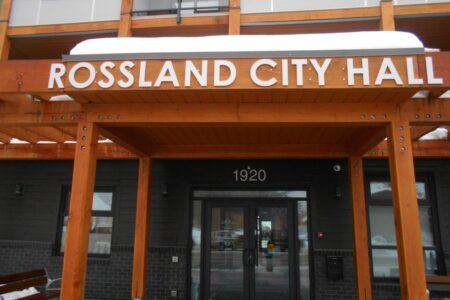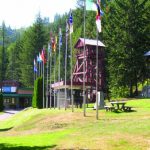A Fishy Columbia River Treaty Situation
Since 2005, Eileen Delehanty Pearkes has researched and explored the natural and human history of the rivers of the upper Columbia River Basin.
She speaks frequently at conferences and symposia throughout the Basin on the history of the Columbia River Treaty and its effects on Basin residents. She has recently completed a manuscript titled A River Captured – history and hydro-electricity in the upper Columbia Basin.
An American by birth, Pearkes has been a resident of Canada since 1985 and Nelson since 1994. She has written many articles and several books that explore place and its cultural meaning.
The Geography of Memory, a history of the landscape and indigenous people of the upper Columbia watershed published in 2002, remains a Kootenay classic.
Pearkes has agreed to help The Nelson Daily readers understand the importance of the Columbia River Treaty to the region with another edition of River Talk.
Today Pearkes, who attended a meeting in Balfour last week, writes about how the Columbia River Treaty can play a part in possibley helping restore the declining fish stocks in Kootenay Lake.
This past week, a small rural community located on the shores of Kootenay Lake hosted a public meeting about declining fish stocks.
Nearly 300 people showed up, coming from communities all around the 70-mile long lake located at the lower end of the trans-boundary Kootenay River system. The Balfour Hall was packed to the edges with fishermen, kayakers, campers and fish guides, all looking for answers from the government about why the kokanee stocks are collapsing.
We’ve been there before.
By the 1940s and 50s, Kootenay Lake was world-famous for an oversized trout unique to its waters, the Gerrard Rainbow. This trout eats smaller fish, among them, the kokanee. As in any aquatic system, the survival of one fish is often dependent on the survival of another.
Back then, the Kootenay Lake system had no hydro-electric dams. Ironically enough, its cold, relatively low-productivity natural waters were especially improved by effluent from a few industrial sources.
The end of that industrial effluent, combined with the construction of Duncan Dam at the tip of the lake’s north arm and Libby Dam, upstream of the lake in Montana, spelled disaster for the circulation of nutrients.
By the 1980s, the kokanee fishery was near a complete collapse and the situation with the Gerrard’s wasn’t much better. The introduction of a non-native shrimp species intended to be food for the kokanee had also backfired when that non-native began to eat the kokanee fry.
Were it not for a nutrient enrichment program begun in the early 1990s, the Kootenay Lake fishery might well have collapsed. The annual and carefully monitored injection of agricultural-grade nitrogen and phosphorus has stabilized the lake’s populations of kokanee and Gerrard.
Things were getting back to a new sort of normal, one dependent on human intervention.
Until 2013, when a virus was discovered in the kokanee. While it wasn’t killing the fish, it was weakening them. Numbers of spawners returning to the Meadow Creek channel were dropping like a stone. Gerrard numbers were up, a good-news story that meant bad news for the kokanee, the giant rainbow’s primary food.
So what does all of this have to do with the Columbia River Treaty? Plenty.
At the time the 1961 water license hearings were held in the region (after the treaty was signed), there were no plans for fish mitigation of any kind. Members of the West Kootenay Rod & Gun club spoke out strongly against constructing the dams without some sort of help for the fish.
Only because of their tireless advocacy did the B.C. Water Comptroller add to the water license a requirement to construct the Meadow Creek spawning channel.
At the recent Balfour meeting, residents suggested more habitat restoration in the undammed rivers and creeks that still run into Kootenay Lake. The provincial government representatives responded positively to this idea, and urged the people there to work with various stewardship groups around the lake to make this happen.
This is where the treaty comes in.
When the CRT was signed, the Canadian and provincial governments negotiated aggressively to receive the 30-year lump-sum payment of $275 million to help finance the construction of dams. The unpredictable increased value of electricity since 1961 has maintained an economic benefit the treaty authors could not have predicted.
The downstream benefit funds (the Canadian Entitlement) authorized by the CRT bring an average of $170 million into provincial coffers each year. Even one percent of that average returned to the region specifically for fisheries could give a big boost to habitat restoration.
Ten percent could work miracles.
It might be time for all the local people to begin to think like a government: to lobby loudly (as the Rod & Gun Club did in 1961) for more benefits to return to the region that makes all the profitable hydro-power.
Will the government do more to mitigate this fishy problem created by its own Columbia River Treaty?
Stay tuned.
























